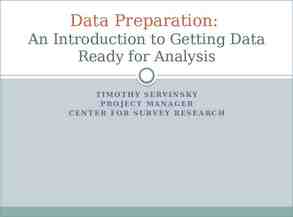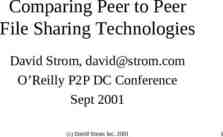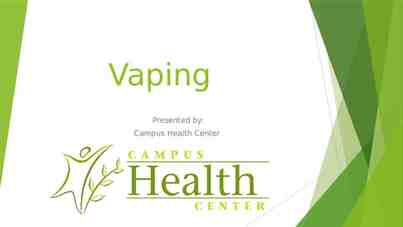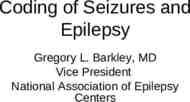Chapter One Foundations of Information Systems in
44 Slides1.94 MB
Chapter One Foundations of Information Systems in Business McGraw-Hill/Irwin 2008,The McGraw-Hill Companies, All Rights Reserved
Learning Objectives 1. Understand the concept of a system and how it relates to information systems. 2. Explain why knowledge of information systems is important for business professionals and identify five areas of information systems knowledge they need. 3. Give examples to illustrate how the business applications of information systems can support a firm’s business processes, managerial decision making, and strategies for competitive advantage. 1- 2
Learning Objectives 4. Provide examples of several major types of information systems from your experiences with business organizations in the real world. 5. Identify several challenges that a business manager might face in managing the successful and ethical development and use of information technology in a business. 1- 3
Learning Objectives 6. Provide examples of the components of real world information systems. Illustrate that in an information system, people use hardware, software, data and networks as resources to perform input, processing, output, storage, and control activities that transform data resources into information products. 7. Demonstrate familiarity with the myriad of career opportunities in information systems. 1- 4
Why study Information Systems and Information Technology? Vital component of successful businesses Helps businesses expand and compete Businesses use IS and IT – To improve efficiency and effectiveness of business processes – For managerial decision making – For workgroup collaboration 1- 5
What is a system? A system – Is a set of interrelated components – With a clearly defined boundary – Working together to achieve a common set of objectives 1- 6
What is an Information System? An organized combination of – People – Hardware – Software – Communications networks – Data resources – Policies and procedures That stores, retrieves, transforms, and disseminates information in an organization 1- 7
Information System (IS) versus Information Technology (IT) IS is all the components and resources necessary to deliver information and functions to the organization IT is hardware, software, networking and data management In theory, IS could be paper based But we will focus on Computer-Based Information Systems (CBIS) 1- 8
IS Knowledge Framework for Business Professionals 1- 9
What should a Business Professional know about IS? Foundation Concepts: fundamental behavioral, technical, business and managerial concepts Information Technology: Hardware, software, networks, data management and Internet-based technology Business Applications: Major uses of the IS in the organization Development Processes: How to plan, develop and implement IS to meet business opportunities Management Challenges: The challenges of effectively and ethically managing IT 1- 10
Fundamental Roles of IS in Business Support of business processes and operations. Support of decision making by employees and managers. Support of strategies for competitive advantage. 1- 11
What does IS do for a business? 1- 12
Trends in Information Systems 1- 13
What is E-business? The use of Internet technologies – to work and empower business processes, electronic commerce, and enterprise collaboration – within a company and with its customers, suppliers, and other business stakeholders. An online exchange of value. 1- 14
How e-business is being used 1- 15
E-business use Reengineer internal business processes Enterprise collaboration systems: support communications, coordination and collaboration among teams and work groups, e.g., virtual teams Electronic commerce: buying, selling, marketing and servicing of products and services over computer networks 1- 16
Types of IS 1- 17
Operations support systems What are they? – Efficiently process business transactions – Control industrial processes – Support communications and collaboration – Update corporate databases 1- 18
Types of Operations Support Systems Transaction Processing Systems – Record and process data from business transactions – Examples: sales processing, inventory systems, accounting systems Process Control Systems – Monitor and control physical processes – Example: in a petroleum refinery use sensors to monitor chemical processes Enterprise Collaboration Systems – Enhance team and work group communications – Examples: e-mail, videoconferencing 1- 19
Two ways to process transactions Batch Processing: – Accumulate transactions over time and process periodically – Example: a bank processes all checks received in a batch at night Online Processing: – Process transactions immediately – Example: a bank processes an ATM withdrawal immediately 1- 20
Management Support Systems What are they? – Provide information and support for effective decision making by managers 1- 21
Types of Management Support Systems Management Information Systems (MIS) – Provide reports and displays to managers – Example: daily sales analysis reports Decision Support Systems (DSS) – Provide interactive ad hoc support for decision making – Example: A what-if-analysis to determine where to spend advertising dollars Executive Information Systems (EIS) – Provide critical information for executives and managers – Example: easy access to actions of competitors 1- 22
Operational or Management Systems Expert Systems – Provide expert advice – Example: credit application advisor Knowledge Management Systems – Support creation, organization and dissemination of business knowledge throughout company – Example: Intranet access to best business practices 1- 23
Classifications of IS by scope Functional business systems – Focus on operational and managerial applications of basic business functions – Examples: support accounting, finance or marketing Strategic information systems – Help get a strategic advantage over its customers – Examples: shipment tracking, e-commerce web systems Cross-functional information systems – Systems that are combinations of several types of information systems – Provide support for many functions 1- 24
Challenges and Opportunities of IT 1- 25
Measuring success of an IS Efficiency – Minimize cost, time and use of information resources Effectiveness – Support business strategies – Enable business processes – Enhance organizational structure and culture – Increase the customer and business value What’s the difference between Efficiency and Effectiveness? 1- 26
Developing IS Solutions 1- 27
Ethical challenges of IT applications 1- 28
Ethical responsibilities What uses of IT might be considered improper or harmful to other individuals or society? What is the proper business use of the Internet or a company’s IT resources? How can you protect yourself from computer crime? 1- 29
Challenges of IT Careers Outsourcing of basic programming to India, the Middle-East and Asia-Pacific countries Strong employment opportunities in other areas in IS Shortage of qualified IS personnel Long-term job outlook positive and exciting 1- 30
Career Opportunities in IS 1- 31
Job growth Among the fastest growing occupations through 2012 – Systems Analyst, – Database administrators, – Other managerial-level positions – Network specialists – Information security 1- 32
IS Function represents Major functional area of business Important contributor to operational efficiency, employee productivity, morale, customer service and satisfaction Major source of information and support for effective decision making Vital ingredient in developing competitive products and services in the global marketplace Dynamic and challenging career opportunity Key component of today’s networked business 1- 33
What is a system? A system – Is a set of interrelated components – With a clearly defined boundary – Working together to achieve a common set of objectives – By accepting inputs and producing outputs in an organized transformation process 1- 34
Systems have three basic functions: Input involves capturing and assembling elements that enter the system to be processed Processing involves transformation process that convert input into output Output involves transferring elements that have been produced by the transformation process to their ultimate destination 1- 35
Cybernetic system All systems have input, processing and output A cybernetic system, a self-monitoring, selfregulating system, adds feedback and control: – Feedback is data about the performance of a system – Control involves monitoring and evaluating feedback to determine whether a system is moving towards the achievement of its goal 1- 36
A Cybernetic system 1- 37
A business as a system 1- 38
Information systems model 1- 39
Components of an IS People Resources – End users: the people who use the IS or the information from the IS – IS specialists: the people who develop and operate IS Hardware Resources – All physical devices used in information processing – Machines, data media, peripherals Software Resources – All information processing instructions including programs and procedures – System software, application software and procedures 1- 40
Components of an IS (cont.) Data Resources – Facts about the business transactions – Processed and organized information – Databases of organized data Network Resources – Communications media – Network infrastructure: hardware and software – The Internet, intranets and extranets 1- 41
Data versus Information Data are raw facts about physical phenomena or business transactions Information is data that has been converted into meaningful and useful context for end users Example: – Sales data is names, quantities and dollar amounts – Sales information is amount of sales by product type, sales territory or salesperson 1- 42
IS Activities Input of data resources – Data entry activities Processing of data into information – E.g., calculate, compare, sort, classify, summarize Output of information products – Messages, reports, forms and graphic images Storage of data resources – Data elements and databases Control of system performance – Monitoring and evaluating feedback 1- 43
Recognizing IS As a business professional, you should be able to look at an IS and identify – The people, hardware, software, data and network resources they use – The type of information products they produce – The way they perform input, processing, output, storage and control activities 1- 44

















































